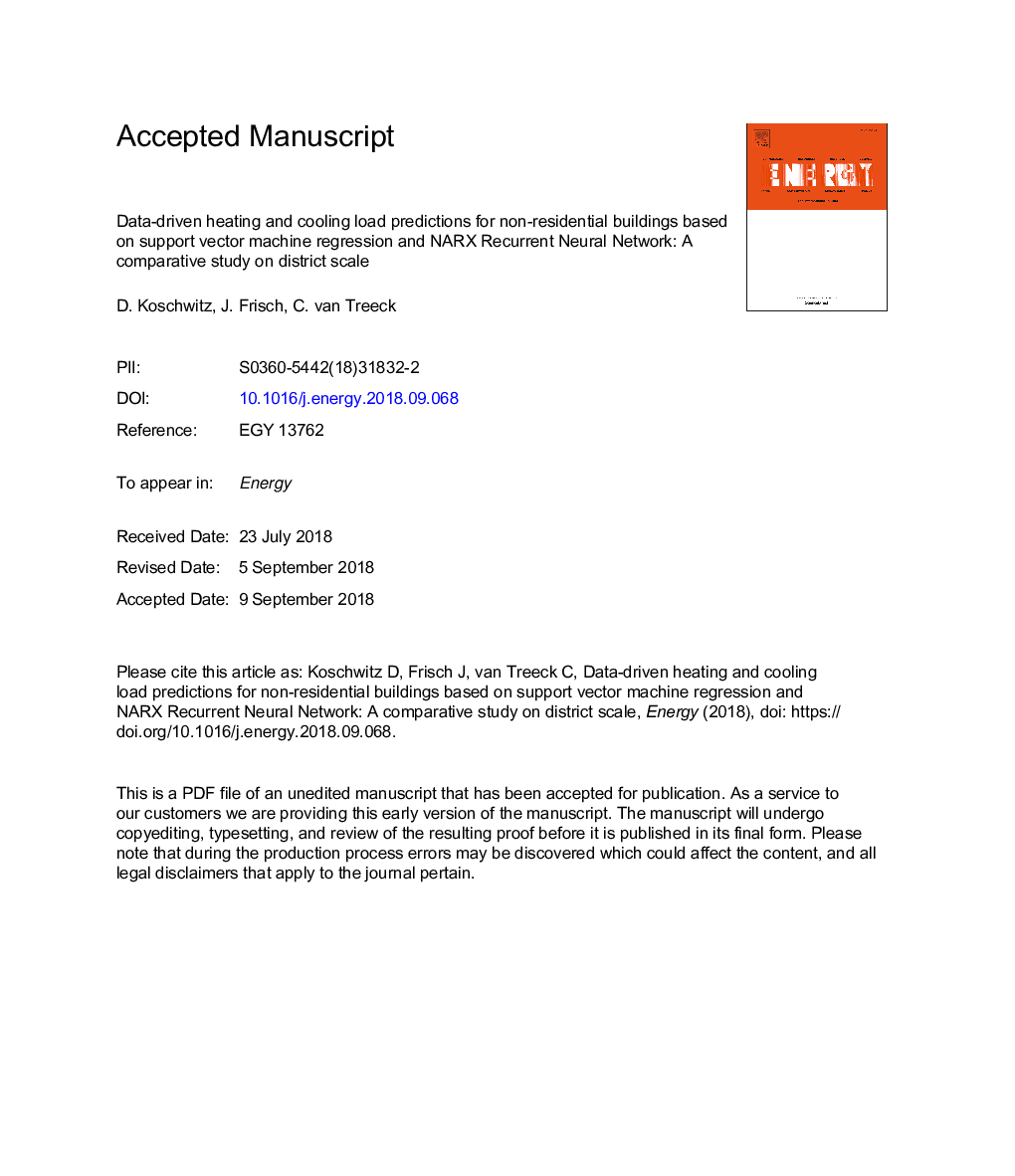| Article ID | Journal | Published Year | Pages | File Type |
|---|---|---|---|---|
| 10156220 | Energy | 2018 | 12 Pages |
Abstract
Predicting building energy consumption is essential for planning and managing energy systems. In recent times, numerous studies focus on load forecasting models dealing with a wide range of different methods. In addition to Artificial Neural Networks (ANN), especially Support Vector Machines (SVM) have been studied. Various research work showed the success and superiority of ANN and SVM for load predictions, where frequently, SVM outperformed ANN models. In this study, data-driven thermal load forecasting performance of ε-SVM Regression (ε-SVM-R) based on a Radial Basis Function (RBF) and a polynomial kernel is compared to the outcome of two Nonlinear Autoregressive Exogenous Recurrent Neural Networks (NARX RNN) of different depths. For demonstration, historical data from a non-residential district in Germany is used for training and testing to predict monthly loads. The evaluation of the resulting predictions show that NARX RNNs yields higher accuracy than (ε-SVM-R) models, in combination with comparable computational effort.
Related Topics
Physical Sciences and Engineering
Energy
Energy (General)
Authors
D. Koschwitz, J. Frisch, C. van Treeck,
